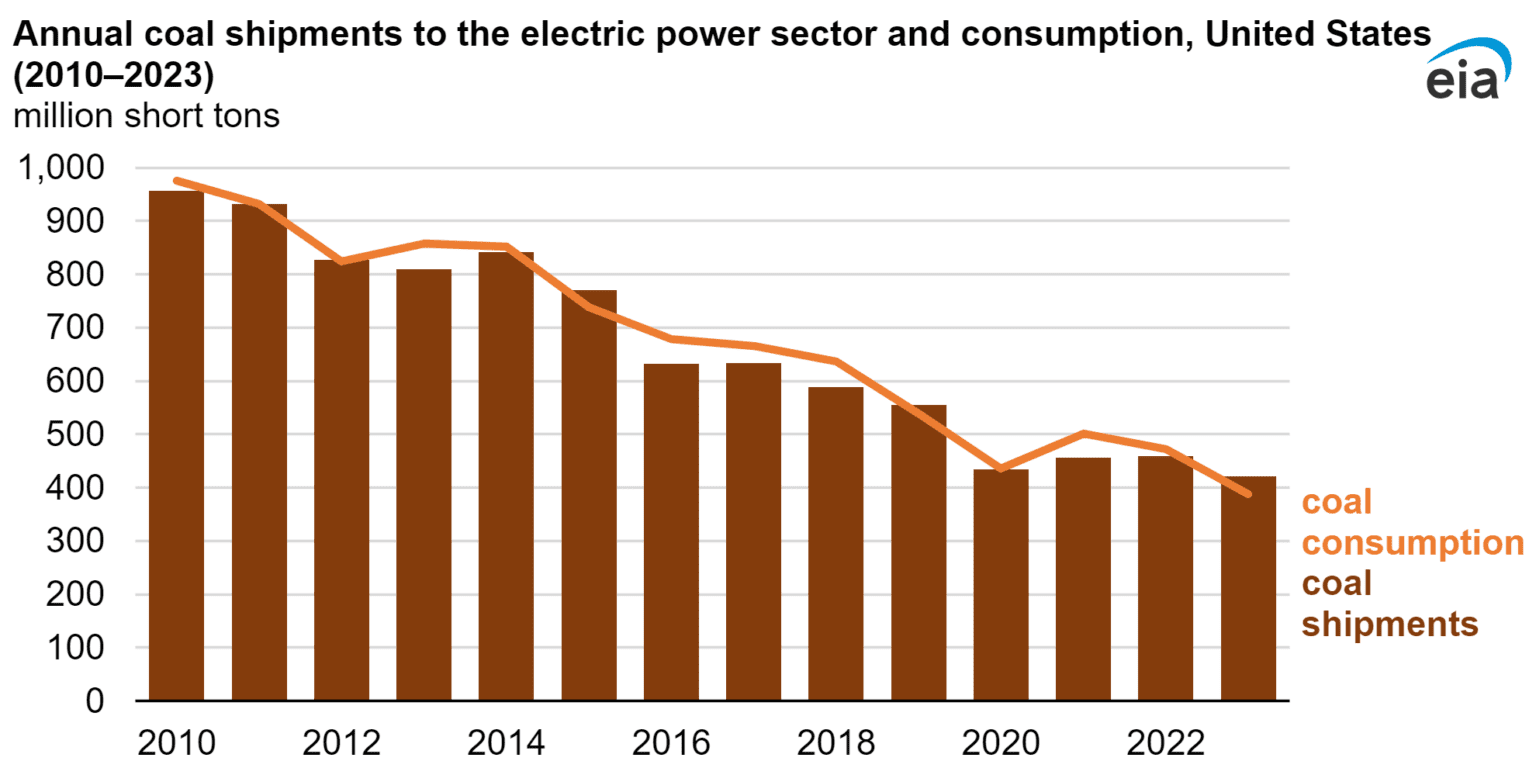EIA: Coal Consumption's Decline is Likely to Reverse This Year

July 16, 2024 - The amount of coal transported in the United States decreased 8% in 2023, continuing a trend in which coal shipments have generally decreased over the past two decades as coal’s share of power generation has declined in the United States. The amount of coal transported to power plants, which are often located far from mines, decreased by more than half, falling from 957 million tons in 2010 to 422 million tons in 2023.
However, the U.S. Energy Information Administration (EIA) expects the decline in coal consumption to reverse this year. In its recently published July update to the Short-Term Energy Outlook, EIA forecast an increase in use of coal to generate electricity in the United States this year, with use dropping back to about 2023 amounts in 2025.
Although the amount of coal being transported closely follows the coal consumption rate, the two measurements can differ from year to year. During 2023, U.S. coal producers shipped 35 million more tons (9%) than U.S. power plants consumed. Surplus deliveries last year boosted inventory levels at power plants by 48%, reducing deliveries in early 2024. Conversely, coal shipments to power plants in 2021 and 2022 were 59 million tons less than the amounts consumed during those two years, and inventories dropped to less than 100 million tons.

Source: U.S. Energy Information Administration, Coal Data Browser
American Electric Power (AEP) recently issued a request for proposal (RFP) for the supply of coal to one or more of its generating stations in multiple coal regions. AEP is seeking proposals for the following regions and terms, but will consider longer-term proposals should the parties be able to agree on mutual terms and conditions.
The RFP was issued for the following regions:
Central Appalachian Basin (Term: 2025, 2026)
Illinois Basin (Term: 2025, 2026, 2027)
Powder River Basin (Term: 2025, 2026)
Northern Appalachian Basin (Term: 2025, 2026, 2027)
Proposals are due by 5 p.m. ET, Friday, Aug. 2, 2024. Proposals will be kept open until 5 p.m. ET, Friday, Sept. 6, 2024, AEP said.
AEP issued a similar request in 2021 seeking fuel for its coal-fired power generation plants to supply through 2024. Overall, the RFP sought contact on more than 19 million metric tons of coal from the Central Appalachian, Illinois, Powder River and Northern Appalachian basins. These four mining regions produce most of the nation’s coal.
Like many U.S. utilities, AEP has been retiring and replacing a large part of its coal-fired generation portfolio. The company still generated 42% of its power from coal-fired plants in 2023.
AEP’s operations span across several states, many of which are within the PJM Interconnection. Use of coal-fired power in PJM territory has dropped over the last decade, largely driven by the buildout of natural gas combined-cycle (NGCC) plants and higher relative fuel costs, according to the U.S. Energy Information Administration (EIA).
In 2023, the use of coal-fired generation in PJM fell to 34% of capacity. Yet coal generators were dispatched less frequently last year, contributing 14% of PJM’s generation, while making up 18% of its generating capacity. By comparison, in 2013, the capacity factor of coal-fired power in the market was 56%, when coal made up 44% of the market’s generation and 38% of its capacity, EIA said.
PJM is the largest wholesale electricity market in the nation and includes all or parts of Delaware, Illinois, Indiana, Kentucky, Maryland, Michigan, New Jersey, North Carolina, Ohio, Pennsylvania, Tennessee, Virginia, West Virginia and Washington, D.C.

